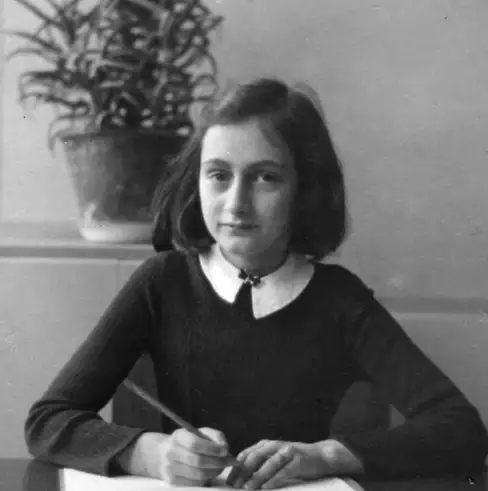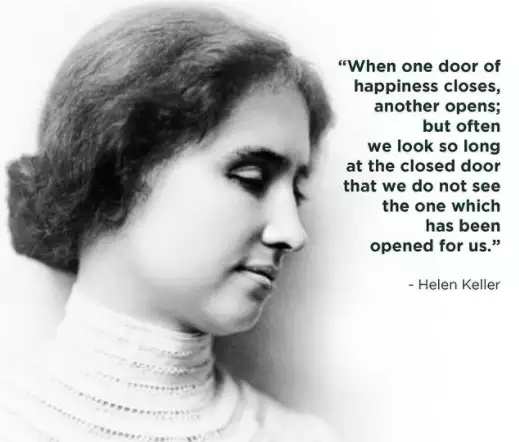Brilio.net - Teks biografi merupakan tulisan yang dibuat orang lain untuk menjelaskan tentang riwayat hidup seseorang sesuai dengan fakta. Biasanya, teks biografi memuat riwayat hidup orang terkenal, sukses, atau memiliki prestasi yang bermanfaat bagi banyak orang.
Baik teks biografi bahasa Inggris maupun Indonesia tidak memiliki banyak perbedaan. Teks biografi akan menjelaskan mengenai kehidupan seorang tokoh sejak ia kecil hingga mencapai kesuksesan atau bisa juga menceritakan hingga akhir hayatnya. Teks bahasa Inggris sendiri memiliki tiga struktur utama, yakni orientation, events, dan re-orientation (closing).
Orientation atau pembuka dalam teks biografi bahasa Inggris menjelaskan tentang alasan atau latar belakang dibuatnya biografi seorang tokoh. Selain alasan, pada bagian orientation ini juga menyinggung informasi umum seperti nama lengkap serta tempat dan tanggal lahir sebagai pengenalan tokoh.
Bagian events merupakan tahapan suatu peristiwa atau kejadian yang dialami seorang tokoh. Pada bagian ini menjelaskan pula proses yang dialami oleh tokoh dalam menghadapi sebuah masalah dan cara menghadapinya. Selain itu, dijelaskan pula mengenai proses seorang tokoh dalam mencapai kesuksesannya secara kronologis.
Pada bagian penutup atau re-orientation (closing) berisi pandangan pribadi dari penulis biografi terhadap tokoh yang ditulisnya. Reorientasi juga bisa memuat kesimpulan yang mencakup keseluruhan dari teks biografi, serta komentar menarik terhadap kisah hidup seorang tokoh.
Supaya kamu lebih memahami lagi bagaimana teks biografi bahasa Inggris yang baik, kamu bisa membaca contoh-contoh teks biografi bahasa Inggris. Nah, berikut brilio.net rangkum dari berbagai sumber, Selasa (18/1), inilah contoh teks biografi bahasa Inggris yang bisa makin mempertajam pemahamanmu.
1. Teks biografi bahasa Inggris tentang Albert Einstein.
foto: Instagram/@alberteinstein
Albert Einstein was born at Ulm, in Württemberg, Germany, on March 14, 1879. Six weeks later the family moved to Munich, where he later on began his schooling at the Luitpold Gymnasium. Later, they moved to Italy and Albert continued his education at Aarau, Switzerland and in 1896 he entered the Swiss Federal Polytechnic School in Zurich to be trained as a teacher in physics and mathematics. In 1901, the year he gained his diploma, he acquired Swiss citizenship and, as he was unable to find a teaching post, he accepted a position as technical assistant in the Swiss Patent Office. In 1905 he obtained his doctor’s degree.
During his stay at the Patent Office, and in his spare time, he produced much of his remarkable work and in 1908 he was appointed Privatdozent in Berne. In 1909 he became Professor Extraordinary at Zurich, in 1911 Professor of Theoretical Physics at Prague, returning to Zurich in the following year to fill a similar post. In 1914 he was appointed Director of the Kaiser Wilhelm Physical Institute and Professor in the University of Berlin. He became a German citizen in 1914 and remained in Berlin until 1933 when he renounced his citizenship for political reasons and emigrated to America to take the position of Professor of Theoretical Physics at Princeton*. He became a United States citizen in 1940 and retired from his post in 1945.
After World War II, Einstein was a leading figure in the World Government Movement, he was offered the Presidency of the State of Israel, which he declined, and he collaborated with Dr. Chaim Weizmann in establishing the Hebrew University of Jerusalem.
Einstein always appeared to have a clear view of the problems of physics and the determination to solve them. He had a strategy of his own and was able to visualize the main stages on the way to his goal. He regarded his major achievements as mere stepping-stones for the next advance.
At the start of his scientific work, Einstein realized the inadequacies of Newtonian mechanics and his special theory of relativity stemmed from an attempt to reconcile the laws of mechanics with the laws of the electromagnetic field. He dealt with classical problems of statistical mechanics and problems in which they were merged with quantum theory: this led to an explanation of the Brownian movement of molecules. He investigated the thermal properties of light with a low radiation density and his observations laid the foundation of the photon theory of light.
In his early days in Berlin, Einstein postulated that the correct interpretation of the special theory of relativity must also furnish a theory of gravitation and in 1916 he published his paper on the general theory of relativity. During this time he also contributed to the problems of the theory of radiation and statistical mechanics.
In the 1920s, Einstein embarked on the construction of unified field theories, although he continued to work on the probabilistic interpretation of quantum theory, and he persevered with this work in America. He contributed to statistical mechanics by his development of the quantum theory of a monatomic gas and he has also accomplished valuable work in connection with atomic transition probabilities and relativistic cosmology.
After his retirement he continued to work towards the unification of the basic concepts of physics, taking the opposite approach, geometrisation, to the majority of physicists.
Einstein’s researches are, of course, well chronicled and his more important works include Special Theory of Relativity (1905), Relativity (English translations, 1920 and 1950), General Theory of Relativity (1916), Investigations on Theory of Brownian Movement (1926), and The Evolution of Physics (1938). Among his non-scientific works, About Zionism (1930), Why War? (1933), My Philosophy (1934), and Out of My Later Years (1950) are perhaps the most important.
Albert Einstein received honorary doctorate degrees in science, medicine and philosophy from many European and American universities. During the 1920’s he lectured in Europe, America and the Far East, and he was awarded Fellowships or Memberships of all the leading scientific academies throughout the world. He gained numerous awards in recognition of his work, including the Copley Medal of the Royal Society of London in 1925, and the Franklin Medal of the Franklin Institute in 1935.
Einstein’s gifts inevitably resulted in his dwelling much in intellectual solitude and, for relaxation, music played an important part in his life. He married Mileva Maric in 1903 and they had a daughter and two sons; their marriage was dissolved in 1919 and in the same year he married his cousin, Elsa Löwenthal, who died in 1936. He died on April 18, 1955 at Princeton, New Jersey.
Sumber: nobelprize.org
2. Teks biografi bahasa Inggris tentang Mahatma Gandhi.
foto: Instagram/@skitsofreeniko
Mohandas Karamchand Gandhi was born on October 2, 1869 in Porbandar, India. He became one of the most respected spiritual and political leaders of the 1900's. Gandhi helped free the Indian people from British rule through nonviolent resistance, and is honoured by Indians as the father of the Indian Nation. He was highly influenced by Thoreau, Tolstoy, Ruskin, and above all the life of Jesus Christ. The Bible, precisely the Sermon of the Mount and the Bagavad -Gita had a great influence on him. The Indian people called Gandhi 'Mahatma', meaning Great Soul. At the age of 13 Gandhi married Kasturba, a girl the same age. Their parents arranged the marriage. The Gandhis had four children. Gandhi studied law in London and returned to India in 1891 to practice. In 1893 he took on a one-year contract to do legal work in South Africa.
At the time the British controlled South Africa (though South Africa as such did not exist at that time, and the British did not control all of it by any means. In fact the Boer War (1898-1900) established the supremacy of the British over the Dutch (Boers) and eventually led to the Union of South Africa. Gandhi served as a medical attendant in this war.). When he attempted to claim his rights as a British subject he was abused, and soon saw that all Indians suffered similar treatment. Gandhi stayed in South Africa for 21 years working to secure rights for Indian people. He developed a method of action based upon the principles of courage, non-violence and truth called Satyagraha. He believed that the way people behave is more important than what they achieve. Satyagraha promoted nonviolence and civil disobedience as the most appropriate methods for obtaining political and social goals. In 1915 Gandhi returned to India. Within 15 years he became the leader of the Indian nationalist movement.
Using the principles of Satyagraha he led the campaign for Indian independence from Britain. Gandhi was arrested many times by the British for his activities in South Africa and India. He believed it was honourable to go to jail for a just cause. More than once Gandhi used fasting to impress upon others the need to be nonviolent. India was granted independence in 1947, and partitioned into India and Pakistan. Rioting between Hindus and Muslims followed. Gandhi had been an advocate for a united India where Hindus and Muslims lived together in peace.
On January 13, 1948, at the age of 78, he began a fast with the purpose of stopping the bloodshed. After 5 days the opposing leaders pledged to stop the fighting and Gandhi broke his fast. Twelve days later a Hindu fanatic, Nathuram Godse who opposed his programme of tolerance for all creeds and religion assassinated him.
There are five great contributions which Mahatma Gandhi gave to the world as follows: (1)A New spirit and technique- Satyagraha; (2) The Emphasis that the moral universe is one and that the morals of individuals, groups, and nations must be the same. (3)His insistence that the means and the ends must be consistent; (4) The fact that he held no ideals he did not embody or was not in the process of embodying. (5) A willingness to suffer and die for his principles. The greatest of these is his Satyagraha.
Sumber: mkgandhi.org
3. Teks biografi bahasa Inggris tentang Michael Jackson.
foto: Instagram/@michaeljackson
Pop sensation Michael Jackson is born on August 29, 1958, in Gary, Indiana.
Jackson began performing with his four brothers in the pop group the Jackson 5 when he was a child. The group scored its first No. 1 single in 1969, with “I Want You Back.” By age 11, Jackson was appearing on TV, and by age 14 he had released his first solo album. A Jackson 5 TV cartoon series appeared in the early ’70s, and in 1976 the Jackson family, including sister Janet Jackson, launched a TV variety show called The Jacksons that ran for one season. Throughout the 70s, media attention focused on Michael, who piped vocals in his high voice for “ABC,” “I’ll Be There,” and many other Top 20 hits.
Jackson released several solo albums in the ’70s, but his great breakthrough came in 1979 with Off the Wall. He became the first solo artist to score four Top 10 hits from one album, including “She’s Out of My Life” and “Rock with You.” His next album, Thriller (1983), became the biggest selling album up to that time, selling some 45 million copies around the world. This time, he scored seven Top 10 singles, and the album won eight Grammies. Although his next album, Bad (1987), sold only about half as many copies as Thriller, it was still a tremendous best-seller. In 1991, Jackson signed an unprecedented $65 million record deal with Sony. That year, he released Dangerous.
In the late 1980s and early 1990s, Jackson developed a reputation as an eccentric recluse. He moved to a 2,700-acre ranch called Neverland, which he outfitted with wild animals and a Ferris wheel. He underwent a facelift and nose job and was rumored to have lightened his skin through chemical treatment, though he claimed his increasing pallor was due to a skin disease. In 1994, Jackson married Lisa Marie Presley; the couple later divorced. Jackson married Deborah Rowe in 1996, and the couple had two children, Prince and Paris, before divorcing in 1999.
Michael Jackson died on June 25, 2009, in Los Angeles, California, just weeks before a planned concert tour billed as his “comeback.” He was 50 years old.
Sumber: history.com
4. Teks biografi bahasa Inggris tentang Stephen Hawking.
foto: Instagram/@informacosmos
Stephen Hawking was regarded as one of the most brilliant theoretical physicists in history. His work on the origins and structure of the universe, from the Big Bang to black holes, revolutionized the field, while his best-selling books have appealed to readers who may not have Hawking's scientific background. Hawking died on March 14, 2018, at the age of 76.
Stephen Hawking was seen by many as the world's smartest person, though he never revealed his IQ score. According to the news site The Atlantic, when a New York Times reporter asked Hawking what his IQ was, he replied with "I have no idea, people who boast about their IQ are losers."
In this brief biography, we look at Hawking's education and career — ranging from his discoveries to the popular books he's written — and the disease that robbed him of mobility and speech.
Stephen Hawking's early life
British cosmologist Stephen William Hawking was born in England on Jan. 8, 1942 — 300 years to the day after the death of the astronomer Galileo Galilei. He attended University College, Oxford, where he studied physics, despite his father's urging to focus on medicine. Hawking went on to Cambridge to research cosmology, the study of the universe as a whole.
In early 1963, just shy of his 21st birthday, Hawking was diagnosed with motor neuron disease, more commonly known as Lou Gehrig's disease or amyotrophic lateral sclerosis (ALS). He was not expected to live more than two years. Completing his doctorate did not appear likely, but Hawking defied the odds. He attained his PhD in 1966 (Hawking made his PhD thesis available online in 2017) and he went on to forge new roads into the understanding of the universe in the decades since.
As the disease spread, Hawking became less mobile and began using a wheelchair. Talking grew more challenging and, in 1985, an emergency tracheotomy caused his total loss of speech. A speech-generating device constructed at Cambridge, combined with a software program, served as his electronic voice, allowing Hawking to select his words by moving the muscles in his cheek.
Just before his diagnosis, Hawking met Jane Wilde, and the two were married in 1965. The couple had three children before separating. Hawking remarried in 1995 but divorced in 2006.
A Brilliant Mind
Hawking continued at Cambridge after his graduation, serving as a research fellow and later as a professional fellow. In 1974, he was inducted into the Royal Society, a worldwide fellowship of scientists. In 1979, he was appointed Lucasian Professor of Mathematics at Cambridge, the most famous academic chair in the world (the second holder was Sir Isaac Newton, also a member of the Royal Society).
Over the course of his career, Hawking studied the basic laws governing the universe. He proposed that, since the universe boasts a beginning — the Big Bang — it likely will have an ending. Working with fellow cosmologist Roger Penrose, he demonstrated that Albert Einstein's Theory of General Relativity suggests that space and time began at the birth of the universe and ends within black holes, which implies that Einstein's theory and quantum theory must be united.
Using the two theories together, Hawking also determined that black holes are not totally dark but instead emit radiation. He predicted that, following the Big Bang, black holes as tiny as protons were created, governed by both general relativity and quantum mechanics.
In 2014, Hawking revised his theory, even writing that " there are no black holes" — at least, in the way that cosmologists traditionally understand them. His theory removed the existence of an "event horizon," the point where nothing can escape. Instead, he proposed that there would be an "apparent horizon" that would alter according to quantum changes within the black hole. But the theory has proven to be controversial.
Hawking also proposed that the universe itself has no boundary, much like the Earth. Although the planet is finite, one can travel around it (and through the universe) infinitely, never encountering a wall that would be described as the "end."
Hawking's Books
Hawking was a popular writer. His first book, "A Brief History of Time" (10th-anniversary edition: Bantam, 1998) was first published in 1988 and became an international bestseller. In it, Hawking aimed to communicate questions about the birth and death of the universe to the layperson.
Hawking went on to write other nonfiction books aimed at non-scientists. These include "A Briefer History of Time," "The Universe in a Nutshell," "The Grand Design" and "On the Shoulders of Giants."
He and his daughter, Lucy Hawking, also created a fictional series of books for middle school children on the creation of the universe, including "George and the Big Bang" (Simon & Schuster, 2012).
Hawking made several television appearances, including a playing hologram of himself on "Star Trek: The Next Generation" and a cameo on the television show "Big Bang Theory." PBS presented an educational miniseries titled "Stephen Hawking's Universe," which probes the theories of the cosmologist.
In 2014, a movie based on Hawking's life was released. Called "The Theory of Everything," the film drew praise from Hawking, who said it made him reflect on his own life. "Although I'm severely disabled, I have been successful in my scientific work," Hawking wrote on Facebook in November 2014. "I travel widely and have been to Antarctica and Easter Island, down in a submarine and up on a zero-gravity flight. One day, I hope to go into space."
Sumber: space.com
5. Teks biografi bahasa Inggris tentang Leonardo da Vinci.
foto: Instagram/@365stoicquotes
Leonardo da Vinci (1452-1519) was a painter, architect, inventor, and student of all things scientific. His natural genius crossed so many disciplines that he epitomized the term “Renaissance man.” Today he remains best known for his art, including two paintings that remain among the world’s most famous and admired, Mona Lisa and The Last Supper. Art, da Vinci believed, was indisputably connected with science and nature. Largely self-educated, he filled dozens of secret notebooks with inventions, observations and theories about pursuits from aeronautics to anatomy. But the rest of the world was just beginning to share knowledge in books made with moveable type, and the concepts expressed in his notebooks were often difficult to interpret. As a result, though he was lauded in his time as a great artist, his contemporaries often did not fully appreciate his genius—the combination of intellect and imagination that allowed him to create, at least on paper, such inventions as the bicycle, the helicopter and an airplane based on the physiology and flying capability of a bat.
Leonardo da Vinci: Early Life and Training
Leonardo da Vinci (1452-1519) was born in Anchiano, Tuscany (now Italy), close to the town of Vinci that provided the surname we associate with him today. In his own time he was known just as Leonardo or as “Il Florentine,” since he lived near Florence—and was famed as an artist, inventor and thinker.
Da Vinci’s parents weren’t married, and his mother, Caterina, a peasant, wed another man while da Vinci was very young and began a new family. Beginning around age 5, he lived on the estate in Vinci that belonged to the family of his father, Ser Peiro, an attorney and notary. Da Vinci’s uncle, who had a particular appreciation for nature that da Vinci grew to share, also helped raise him.
Leonardo da Vinci: Early Career
Da Vinci received no formal education beyond basic reading, writing and math, but his father appreciated his artistic talent and apprenticed him at around age 15 to the noted sculptor and painter Andrea del Verrocchio, of Florence. For about a decade, da Vinci refined his painting and sculpting techniques and trained in mechanical arts. When he was 20, in 1472, the painters’ guild of Florence offered da Vinci membership, but he remained with Verrocchio until he became an independent master in 1478. Around 1482, he began to paint his first commissioned work, The Adoration of the Magi, for Florence’s San Donato, a Scopeto monastery.
However, da Vinci never completed that piece, because shortly thereafter he relocated to Milan to work for the ruling Sforza clan, serving as an engineer, painter, architect, designer of court festivals and, most notably, a sculptor. The family asked da Vinci to create a magnificent 16-foot-tall equestrian statue, in bronze, to honor dynasty founder Francesco Sforza. Da Vinci worked on the project on and off for 12 years, and in 1493 a clay model was ready to display. Imminent war, however, meant repurposing the bronze earmarked for the sculpture into cannons, and the clay model was destroyed in the conflict after the ruling Sforza duke fell from power in 1499.
Leonardo da Vinci: 'The Last Supper' and 'Mona Lisa'
Although relatively few of da Vinci’s paintings and sculptures survive—in part because his total output was quite small—two of his extant works are among the world’s most well-known and admired paintings.
The first is da Vinci’s “The Last Supper,” painted during his time in Milan, from about 1495 to 1498. A tempera and oil mural on plaster, “The Last Supper” was created for the refectory of the city’s Monastery of Santa Maria delle Grazie. Also known as “The Cenacle,” this work measures about 15 by 29 feet and is the artist’s only surviving fresco. It depicts the Passover dinner during which Jesus Christ addresses the Apostles and says, “One of you shall betray me.” One of the painting’s stellar features is each Apostle’s distinct emotive expression and body language. Its composition, in which Jesus is centered among yet isolated from the Apostles, has influenced generations of painters.
When Milan was invaded by the French in 1499 and the Sforza family fled, da Vinci escaped as well, possibly first to Venice and then to Florence. There, he painted a series of portraits that included “La Gioconda,” a 21-by-31-inch work that’s best known today as “Mona Lisa.” Painted between approximately 1503 and 1506, the woman depicted—especially because of her mysterious slight smile—has been the subject of speculation for centuries. In the past she was often thought to be Mona Lisa Gherardini, a courtesan, but current scholarship indicates that she was Lisa del Giocondo, wife of Florentine merchant Francisco del Giocondo. Today, the portrait—the only da Vinci portrait from this period that survives—is housed at the Louvre Museum in Paris, France, where it attracts millions of visitors each year.
Around 1506, da Vinci returned to Milan, along with a group of his students and disciples, including young aristocrat Francesco Melzi, who would be Leonardo’s closest companion until the artist’s death. Ironically, the victor over the Duke Ludovico Sforza, Gian Giacomo Trivulzio, commissioned da Vinci to sculpt his grand equestrian-statue tomb. It, too, was never completed (this time because Trivulzio scaled back his plan). Da Vinci spent seven years in Milan, followed by three more in Rome after Milan once again became inhospitable because of political strife.
Leonardo da Vinci: Philosophy of Interconnectedness
Da Vinci’s interests ranged far beyond fine art. He studied nature, mechanics, anatomy, physics, architecture, weaponry and more, often creating accurate, workable designs for machines like the bicycle, helicopter, submarine and military tank that would not come to fruition for centuries. He was, wrote Sigmund Freud, “like a man who awoke too early in the darkness, while the others were all still asleep.”
Several themes could be said to unite da Vinci’s eclectic interests. Most notably, he believed that sight was mankind’s most important sense and that “saper vedere”(“knowing how to see”) was crucial to living all aspects of life fully. He saw science and art as complementary rather than distinct disciplines, and thought that ideas formulated in one realm could—and should—inform the other.
Probably because of his abundance of diverse interests, da Vinci failed to complete a significant number of his paintings and projects. He spent a great deal of time immersing himself in nature, testing scientific laws, dissecting bodies (human and animal) and thinking and writing about his observations. At some point in the early 1490s, da Vinci began filling notebooks related to four broad themes—painting, architecture, mechanics and human anatomy—creating thousands of pages of neatly drawn illustrations and densely penned commentary, some of which (thanks to left-handed “mirror script”) was indecipherable to others.
The notebooks—often referred to as da Vinci’s manuscripts and “codices”—are housed today in museum collections after having been scattered after his death. The Codex Atlanticus, for instance, includes a plan for a 65-foot mechanical bat, essentially a flying machine based on the physiology of the bat and on the principles of aeronautics and physics. Other notebooks contained da Vinci’s anatomical studies of the human skeleton, muscles, brain, and digestive and reproductive systems, which brought new understanding of the human body to a wider audience. However, because they weren’t published in the 1500s, da Vinci’s notebooks had little influence on scientific advancement in the Renaissance period.
Leonardo da Vinci: Later Years
Da Vinci left Italy for good in 1516, when French ruler Francis I generously offered him the title of “Premier Painter and Engineer and Architect to the King,” which afforded him the opportunity to paint and draw at his leisure while living in a country manor house, the Château of Cloux, near Amboise in France. Although accompanied by Melzi, to whom he would leave his estate, the bitter tone in drafts of some of his correspondence from this period indicate that da Vinci’s final years may not have been very happy ones. (Melzi would go on to marry and have a son, whose heirs, upon his death, sold da Vinci’s estate.)
Da Vinci died at Cloux (now Clos-Lucé) in 1519 at age 67. He was buried nearby in the palace church of Saint-Florentin. The French Revolution nearly obliterated the church, and its remains were completely demolished in the early 1800s, making it impossible to identify da Vinci’s exact gravesite.
Sumber: history.com
6. Teks biografi bahasa Inggris tentang Anne Frank.
foto: Instagram/@annefrankhouse_official
Jewish Anne Frank hid in 1942 from the Nazis during the occupation of the Netherlands. Two years later she was discovered. In 1945 she died in the Bergen-Belsen concentration camp.
Anne’s first yearsAnne Frank was born in the German city of Frankfurt am Main in 1929. Anne’s sister Margot was three years her senior. Unemployment was high and poverty was severe in Germany, and it was the period in which Adolf Hitler and his party were gaining more and more supporters. Hitler hated the Jews and blamed them for the problems in the country. He took advantage of the rampant antisemitic sentiments in Germany. The hatred of Jews and the poor economic situation made Anne's parents, Otto and Edith Frank, decide to move to Amsterdam. There, Otto founded a company that traded in pectin, a gelling agent for making jam.
Nazi Germany invades the NetherlandsBefore long, Anne felt right at home in the Netherlands. She learned the language, made new friends and went to a Dutch school near her home. Her father worked hard to get his business off the ground, but it was not easy. Otto also tried to set up a company in England, but the plan fell through. Things looked up when he started selling herbs and spices in addition to the pectin.On 1 September 1939, when Anne was 10 years old, Nazi Germany invaded Poland, and so the Second World War began. Not long after, on 10 May 1940, the Nazis also invaded the Netherlands. Five days later, the Dutch army surrendered. Slowly but surely, the Nazis introduced more and more laws and regulations that made the lives of Jews more difficult. For instance, Jews could no longer visit parks, cinemas, or non-Jewish shops. The rules meant that more and more places became off-limits to Anne. Her father lost his company, since Jews were no longer allowed to run their own businesses. All Jewish children, including Anne, had to go to separate Jewish schools.
Anne has to go into hiding in the Secret AnnexThe Nazis took things further, one step at the time. Jews had to start wearing a Star of David on their clothes and there were rumours that all Jews would have to leave the Netherlands. When Margot received a call-up to report for a so-called ‘labour camp’ in Nazi Germany on 5 July 1942, her parents were suspicious. They did not believe the call-up was about work and decided to go into hiding the next day in order to escape persecution. In the spring of 1942, Anne’s father had started furnishing a hiding place in the annex of his business premises at Prinsengracht 263. He received help from his former colleagues. Before long, they were joined by four more people. The hiding place was cramped. Anne had to keep very quiet and was often afraid.
Anne keeps a diaryOn her thirteenth birthday, just before they went into hiding, Anne was presented with a diary. During the two years in hiding, Anne wrote about events in the Secret Annex, but also about her feelings and thoughts. In addition, she wrote short stories, started on a novel and copied passages from the books she read in her Book of Beautiful Sentences. Writing helped her pass the time. When the Minister of Education of the Dutch government in England made an appeal on Radio Orange to hold on to war diaries and documents, Anne was inspired to rewrite her individual diaries into one running story, titled Het Achterhuis (The Secret Annex).
The hiding place is discovered Anne started rewriting her diary, but before she was done, she and the other people in hiding were discovered and arrested by police officers on 4 August 1944. The police also arrested two of the helpers. To this day, we do not know the reason for the police raid.Despite the raid, part of Anne’s writing was preserved: two other helpers took the documents before the Secret Annex was emptied by order of the Nazis.
Anne is deported to Auschwitz Via the offices of the Sicherheitsdienst (the German security police), a prison in Amsterdam, and the Westerbork transit camp, the people from the Secret Annex were put on transport to the Auschwitz-Birkenau concentration and extermination camp. The train journey took three days, during which Anne and over a thousand others were packed closely together in cattle wagons. There was little food and water and only a barrel for a toilet. Upon arrival at Auschwitz, Nazi doctors checked to see who would and who would not be able to do heavy forced labour. Around 350 people from Anne's transport were immediately taken to the gas chambers and murdered. Anne, Margot and their mother were sent to the labour camp for women. Otto ended up in a camp for men.
Anne dies from exhaustion in Bergen-BelsenIn early November 1944, Anne was put on transport again. She was deported to the Bergen-Belsen concentration camp with Margot. Their parents stayed behind in Auschwitz. The conditions in Bergen-Belsen were horrible too. There was a lack of food, it was cold, wet and there were contagious diseases. Anne and Margot contracted typhus. In February 1945 they both died owing to its effects, Margot first, Anne shortly afterwards. Anne’s father Otto was the only one of the people from the Secret Annex to survive the war. He was liberated from Auschwitz by the Russians and during his long journey back to the Netherlands he learned that his wife Edith had died. Once in the Netherlands, he heard that Anne and Margot were no longer alive either.
Sumber: annefrank.org
7. Teks biografi bahasa Inggris tentang Helen Keller.
foto: Instagram/@southlondoncollege_uk
Undeterred by deafness and blindness, Helen Keller rose to become a major 20th century humanitarian, educator and writer. She advocated for the blind and for women’s suffrage and co-founded the American Civil Liberties Union.
Born on June 27, 1880 in Tuscumbia, Alabama, Keller was the older of two daughters of Arthur H. Keller, a farmer, newspaper editor, and Confederate Army veteran, and his second wife Katherine Adams Keller, an educated woman from Memphis. Several months before Helen’s second birthday, a serious illness—possibly meningitis or scarlet fever—left her deaf and blind. She had no formal education until age seven, and since she could not speak, she developed a system for communicating with her family by feeling their facial expressions.
Recognizing her daughter’s intelligence, Keller’s mother sought help from experts including inventor Alexander Graham Bell, who had become involved with deaf children. Ultimately, she was referred to Anne Sullivan, a graduate of the Perkins School for the Blind, who became Keller’s lifelong teacher and mentor. Although Helen initially resisted her, Sullivan persevered. She used touch to teach Keller the alphabet and to make words by spelling them with her finger on Keller’s palm. Within a few weeks, Keller caught on. A year later, Sullivan brought Keller to the Perkins School in Boston, where she learned to read Braille and write with a specially made typewriter. Newspapers chronicled her progress. At fourteen, she went to New York for two years where she improved her speaking ability, and then returned to Massachusetts to attend the Cambridge School for Young Ladies. With Sullivan’s tutoring, Keller was admitted to Radcliffe College, graduating cum laude in 1904. Sullivan went with her, helping Keller with her studies. (Impressed by Keller, Mark Twain urged his wealthy friend Henry Rogers to finance her education.)
Even before she graduated, Keller published two books, The Story of My Life (1902) and Optimism (1903), which launched her career as a writer and lecturer. She authored a dozen books and articles in major magazines, advocating for prevention of blindness in children and for other causes.
Sullivan married Harvard instructor and social critic John Macy in 1905, and Keller lived with them. During that time, Keller’s political awareness heightened. She supported the suffrage movement, embraced socialism, advocated for the blind and became a pacifist during World War I. Keller’s life story was featured in the 1919 film, Deliverance. In 1920, she joined Jane Addams, Crystal Eastman, and other social activists in founding the American Civil Liberties Union; four years later she became affiliated with the new American Foundation for the Blind in 1924.
After Sullivan’s death in 1936, Keller continued to lecture internationally with the support of other aides, and she became one of the world’s most-admired women (though her advocacy of socialism brought her some critics domestically). During World War II, she toured military hospitals bringing comfort to soldiers.
A second film on her life won the Academy Award in 1955; The Miracle Worker —which centered on Sullivan—won the 1960 Pulitzer Prize as a play and was made into a movie two years later. Lifelong activist, Keller met several US presidents and was honored with the Presidential Medal of Freedom in 1964. She also received honorary doctorates from Glasgow, Harvard, and Temple Universities.
Sumber: womenhistory.org
Recommended By Editor
- 13 Aplikasi wallpaper terbaik Android, tampilan HP jadi lebih keren
- 9 Rekomendasi aplikasi scan dokumen, jelas seperti pakai scanner asli
- 9 Manfaat mentimun untuk wajah, bikin wajah lembap dan cerah
- 9 Rekomendasi skincare kulit kusam, wajah cerah alami
- 9 Rekomendasi aplikasi membuat CV lamaran kerja, cukup 3 langkah







































